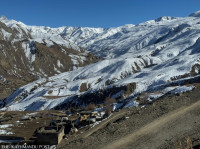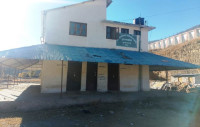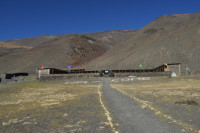Karnali Province
Dhorpatan hunting reserve faces opposition to buffer zone plans
The residents of Putha Uttarganga Rural Municipality, which falls inside the hunting reserve, fear a buffer zone would restrict their movement and may cause displacements..jpg&w=900&height=601)
Mahesh KC
The Dhorpatan Hunting Reserve, the only reserve that allows game hunting in Nepal, has been struggling to create a buffer zone in its effort to protect the bio-diverse reserve.
Spread over a total area of 1,325 square kilometres, the hunting reserve is in the Dhaulagiri mountain range and touches Baglung, Myagdi, and East Rukum districts. Sixty percent of the reserve lies in East Rukum covering much of the Putha Uttarganga Rural Municipality.
The reserve was established in 1983 and its notice was published in the Nepal gazette four years later. The reserve is home to 32 species of mammals and 130 bird species.
According to Ranger Binod BK of the Taksera sector office, the reserve has been struggling for a long time to create a buffer zone but their efforts have been unsuccessful largely due to objections from the residents of the Putha Uttarganga Rural Municipality. “The locals fear they would be displaced if a buffer zone is created as most villages of the rural municipality fall under the reserve area,” said BK.
Wards 1, 2, 3 and 4 and some areas of wards 10 and 11 fall inside the hunting reserve.
Shir Bahadur Budha of Ward 10 says it would be better for the locals if the hunting reserve dropped the buffer zone idea. “Most human settlements of the rural municipality fall inside the hunting reserve. So if they created a buffer zone then that would limit our freedom of movement and that would simply be unacceptable,” he said.
However, Abinash Thapa, assistant conservation officer of the reserve, disproves the notion that a buffer zone would cause displacement of the locals or restrict their movement.
“We will create a buffer zone and form a local management committee to oversee the zone. Also, at least 30 to 50 percent of the income generated by the hunting reserve will go towards the committee, which will spend the money on various development works in the communities,” said Thapa. “Having a buffer zone means there will be fewer human-animal conflicts and it also helps in conservation efforts.”
Thapa also claimed that no settlement will face displacement. “Creation of a buffer zone will not have any negative impact on the locals or their livelihoods, but it’s hard to convince them since they appear unprepared to listen to us,” he said.
According to Thapa, the hunting reserve has seven blocks designated for hunting, four of which are in East Rukum.
“The first hunting season starts from mid-September and ends in mid-November, and the second season starts in mid-March to mid-May every year. Hunters from all over the world have started coming already,” said Thapa.
The government gives hunting enthusiasts permission to hunt specific species in the reserve each year. The Department of National Park and Wildlife Conservation has issued permits to hunt eight Himalayan blue sheep and 12 Himalayan tahrs through competitive bids this season, according to BK, the ranger.




 16.12°C Kathmandu
16.12°C Kathmandu











